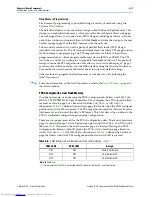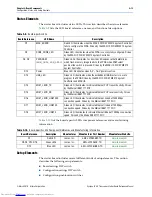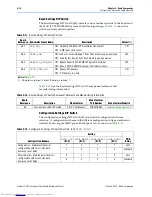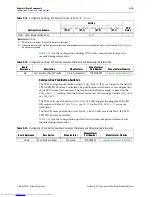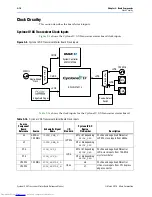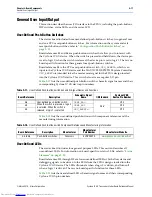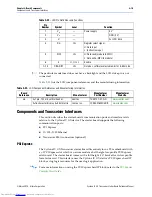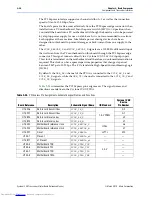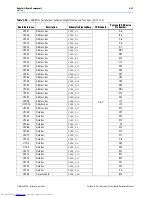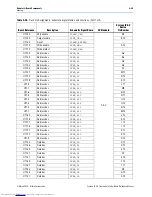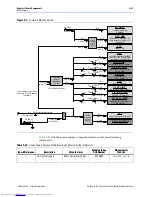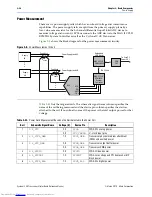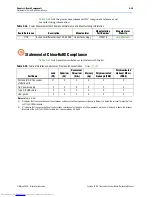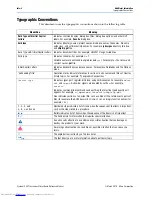
Chapter 2: Board Components
2–17
General User Input/Output
© March 2010 Altera Corporation
Cyclone IV GX Transceiver Starter Board Reference Manual
General User Input/Output
This section describes the user I/O interface to the FPGA, including the push-buttons,
DIP switches, status LEDs, and character LCD.
User-Defined Push-Button Switches
The starter board includes three user-defined push-button switches: two general user
and one CPU reset push-button switches . For information on the system and safe
reset push-button switches, refer to
“Configuration Push-Button Switches” on
page 2–15
.
Board references S5 and S6 are push-button switches that allow you to interact with
the Cyclone IV GX device. When the switch is pressed and held down, the device pin
is set to logic 0; when the switch is released, the device pin is set to logic 1. There is no
board-specific function for these general user push-button switches.
Board reference S4 is the CPU reset push-button switch,
CPU_RESETn
, which is an
input to the Cyclone IV GX device and the MAX II CPLD EPM2210 System Controller.
CPU_RESETn
is intended to be the master reset signal for the FPGA design loaded
into the Cyclone IV GX device. This switch also acts as a regular I/O pin.
Table 2–17
lists the user-defined push-button switch schematic signal names and their
corresponding Cyclone IV GX device pin numbers.
Table 2–18
lists the user-defined push-button switch component reference and the
manufacturing information.
User-Defined LEDs
The starter board includes four general purpose LEDs. This section describes all
user-defined LEDs. For information on board-specific or status LEDs, refer to
“Status
Elements” on page 2–13
.
Board references D5 through D8 are four user-defined LEDs which allow status and
debugging signals to be driven to the LEDs from the FPGA designs loaded into the
Cyclone IV GX device. The LEDs illuminate when a logic 0 is driven, and turns off
when a logic 1 is driven. There is no board-specific function for these LEDs.
Table 2–19
lists the user-defined LED schematic signal names and their corresponding
Cyclone IV GX pin numbers.
Table 2–17.
User-Defined Push-Button Switch Schematic Signal Names and Functions
Board Reference
Description
Schematic Signal
Name
I/O Standard
Cyclone IV GX
Device Pin Number
S6
User-defined push-button switch.
When the switch is pressed, a logic 0
is selected. When the switch is
released, a logic 1 is selected.
USER_PB0
2.5-V
H13
S5
USER_PB1
G13
S4
CPU_RESETn
D10
Table 2–18.
User-Defined Push-Button Switch Component Reference and Manufacturing Information
Board Reference
Description
Manufacturer
Manufacturer
Part Number
Manufacturer Website
S4 to S6
Push-button switches
Panasonic
EVQPAC07K
www.panasonic.com/industrial/
electronic components distributor









